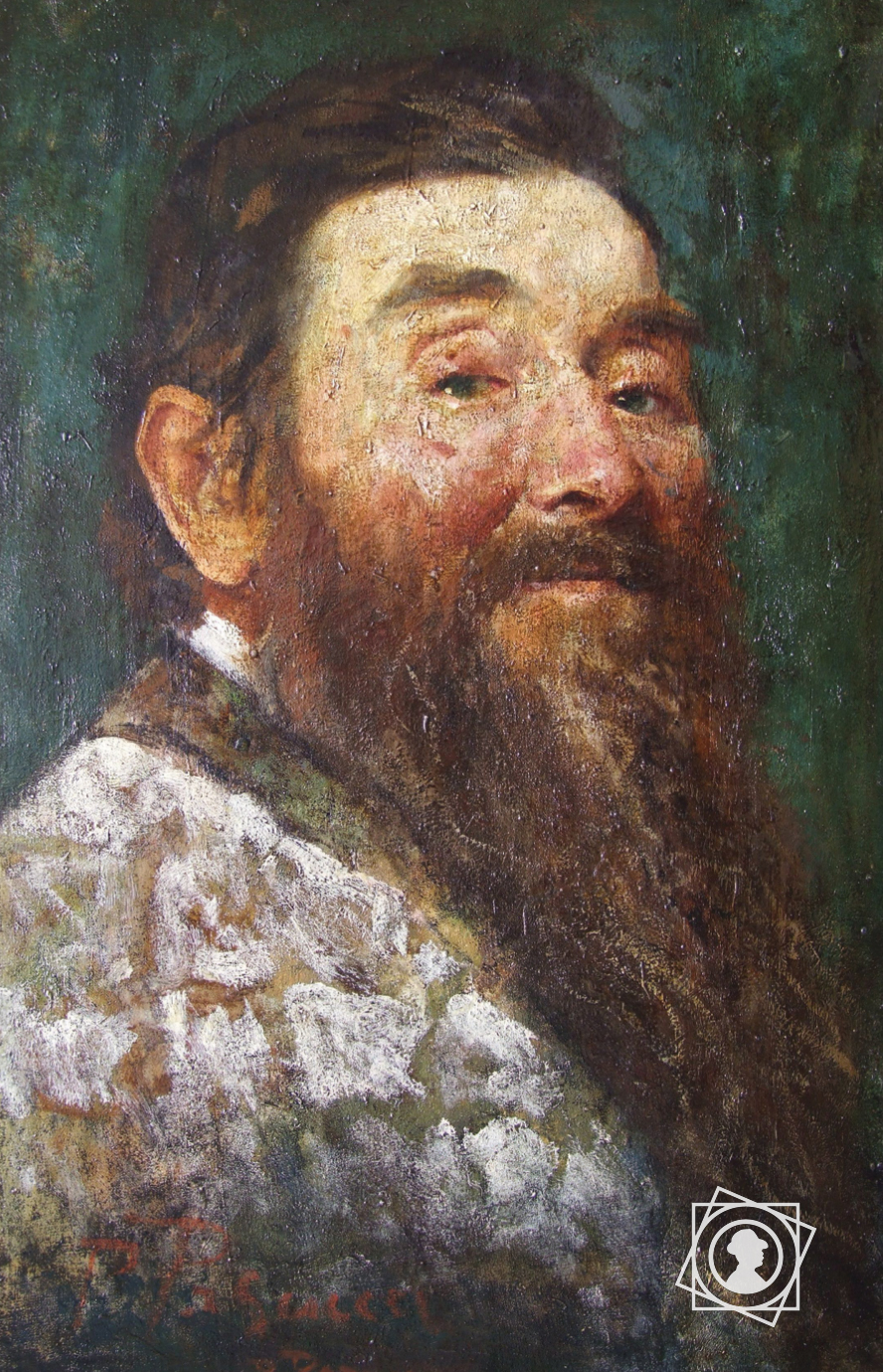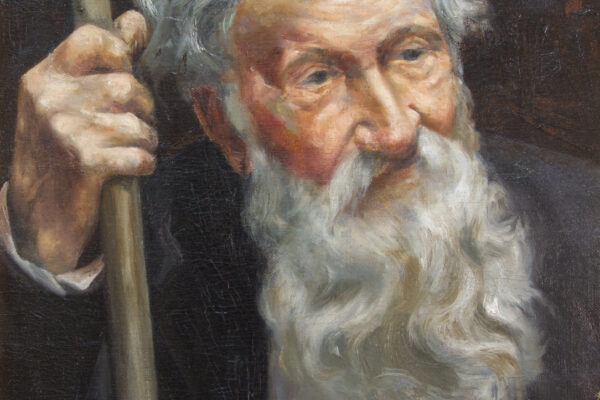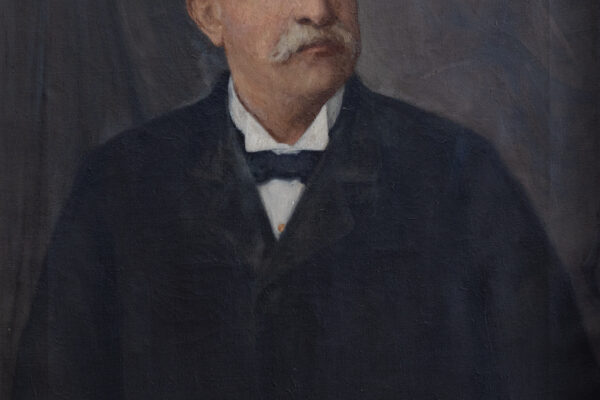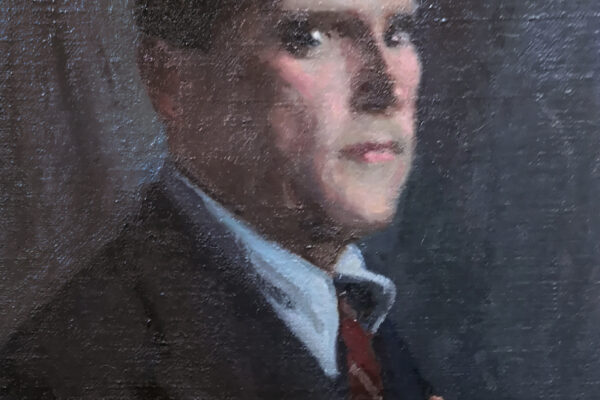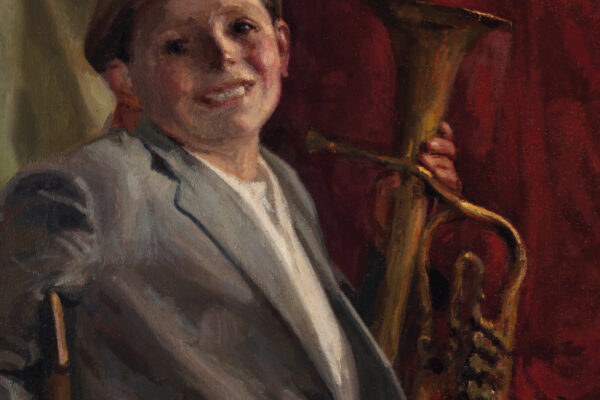Oil on canvas, 57.7×36.8 cm
Signed twice in red, at the bottom
Circa 1897-1908
Manciano, private collection
Here Pascucci portrays a fellow townsman distinguished by his interesting, eccentric physiognomy: a long, flowing beard, red like his moustache and hair, Norman colouring; a full, ruddy, smiling face that exudes vitality and good cheer. Identified as a Niccolai, a member of a well-known Manciano family, he reappears in the large canvas of The Apostles, which was presented, to great success, in Rome in 1909 and is now in the church of San Leonardo in Manciano. The other Apostles in Pascucci’s painting were also recognisable as inhabitants of Manciano, thus offering a monumental celebration of the hardworking local community engaged in a solemn religious performance.


